Reign c. 190 CE Father Ilamcetcenni | Queen Alli – Velir princess Parents Ilamchetchenni | |
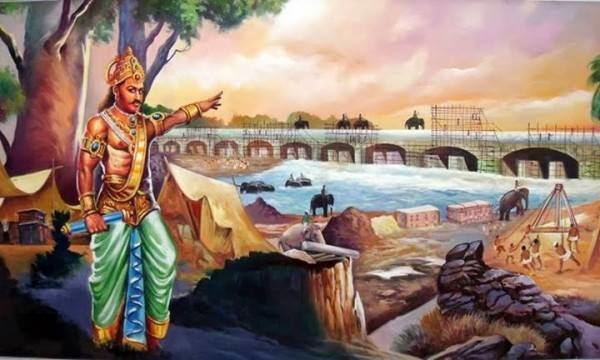 | ||
Issue NalankilliNeḍunkiḷḷiMāvalattān Children Nalankilli, Neḍunkiḷḷi, Māvalattān Similar Rajendra Chola I, Aditya Karikalan, Raja Raja Chola I | ||
Karikala cholan or karikala chozhan tamil
Karikala was a Chola king who ruled in southern India during the Sangam period. He is recognised as the greatest of the Early Cholas. Though there is disagreement between scholars on the dating of his reign, the most widely accepted date is 190 CE, which has been arrived at through the Gajabahu synchronism.
Contents
- Karikala cholan or karikala chozhan tamil
- Karikala cholan
- Early life
- Battle of Venni
- Further wars and conquests
- Grand Anicut
- Karikala Cholan Manimandapam
- References
Karikala cholan
Early life
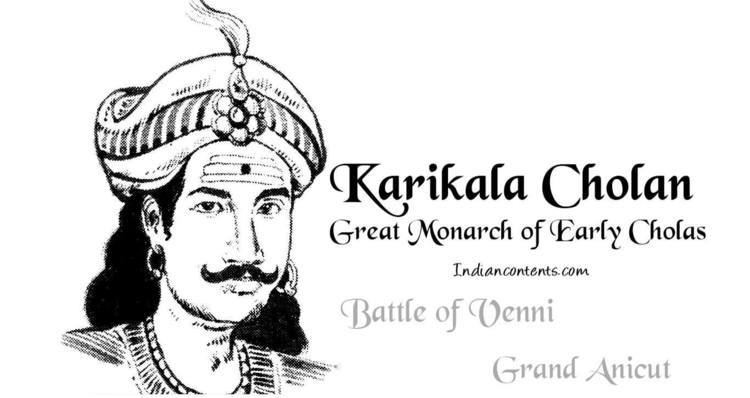
Karikala was the son of Ilamcetcenni. The name Karikalan has been held to mean "the man with the charred leg" and perpetuates the memory of a fire accident in the early years of his life. Some scholars also hold the view kari and kalan are Tamil words meaning "slayer of elephants". Poruṇarāṟṟuppaṭai describes the back-formed origin legend of this incident as follows:
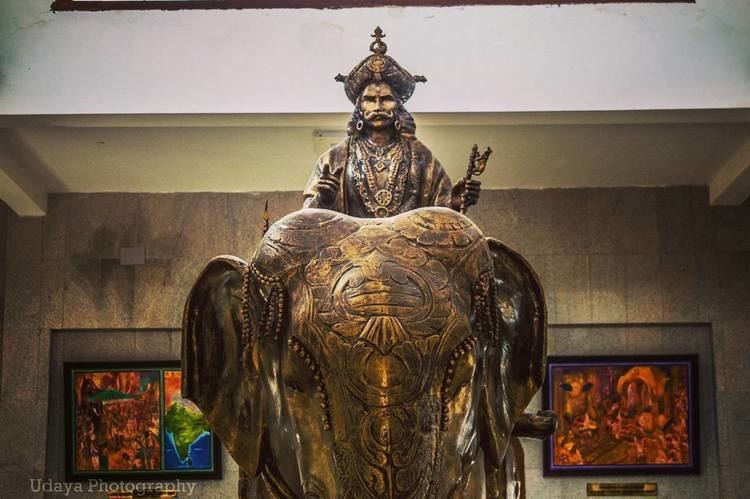
The king of Urayur Ilamcetcenni married a Velir princess from Azhundur and she became pregnant and gave birth to Karikala. Ilamcetcenni died soon after. Due to his young age, Karikala's right to the throne was overlooked and there was political turmoil in the country. Karikala was exiled. When normality returned, the Chola ministers sent a state elephant to look for the prince. The elephant found the prince hiding in Karuvur. His political opponents arrested and imprisoned him. The prison was set on fire that night. Karikala escaped the fire and, with the help of his uncle Irum-pitar-thalaiyan, defeated his enemies. Karikala’s leg was scorched in the fire and from thence Karikala became his name.
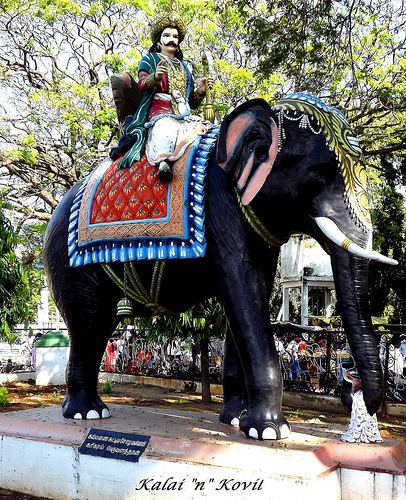
Old Sangam Age inscriptions and also sthala puranam of great ancient Saiva shrine at Parasalur, near Mayavaram says that in order to escape the murder plot hatched by conspirators Karikal Valavan stayed there in disguise of a vedic and agama sastra lecturer for eight years. Paṭṭiṉappālai, written in praise of Karikala also describes this incident, but without mention of the fable of the burnt limb:
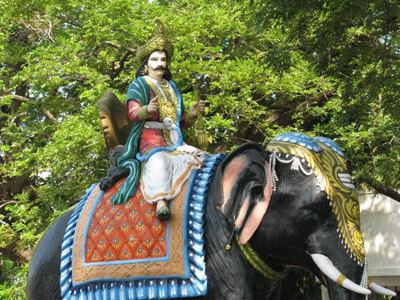
Like the Tiger cub with its sharp claws and its curved stripes growing (strong) within the cage, his strength came to maturity (like wood in grain) while he was in the bondage of his enemies. As the large-trunked elephant pulls down the banks of the pit, and joins its mate, even so after deep and careful consideration, he drew his sword, effected his escape by overpowering the strong guard and attained his glorious heritage in due course.
Battle of Venni
According to the Poruṇarāṟṟuppaṭai, Karikala Chola fought a great Battle of Venni in which both Pandyan and Cheran kings suffered a defeat. Although we know very little about the circumstances leading to this battle, there can be no doubt that it marked the turning point in Karikala’s career, for in this battle he broke the back of the powerful confederacy formed against him. Besides the two crowned kings of the Pandya and Chera countries, eleven minor chieftains took the opposing side in the campaign and shared defeat at the hands of Karikala. The Chera king, who was wounded on his back in the battle, committed suicide by starvation. Venni was the watershed in the career of Karikala which established him firmly on his throne and secured for him some sort of hegemony among the three crowned monarchs. Venni is also known as Vennipparandalai and now it is known as Kovilvenni and is situated near Thanjavur.
Further wars and conquests
After the battle of Venni, Karikala had other opportunities to exercise his arms. He defeated the confederacy of nine minor chieftains in the battle of Vakaipparandalai. Paranar, a contemporary of Karikala, in his poem from Agananuru mentions this incident without giving any information on the cause of the conflict. According to legends Karikala was one of the few Tamil kings who won the whole of Ceylon (Lanka). The Grand anicut was built after his conquest over the Singalese kingdom and he used Singalese war prisoners for the hard task of moving stones from the mountains to the river bed of the Kaveri. The Pattinappalai also describes the destruction caused by Karikala’s armies in the territories of his enemies and adds that as the result of these conflicts, the "Northerners and Westerners were depressed… and his flushed look of anger caused the Pandya’s strength to give way…".
Grand Anicut
The Grand Anicut, however was built by his medieval descendant Aditya Karikalan, elder brother of the greatest of medieval kings, Raja Raja Chola I
Karikala Cholan Manimandapam
Karikala Cholan Manimandapam (memorial hall) was built in order to honour of the king who built Grand Anicut. The hall has Dravidian architecture and built at the anicut and it costed Rs. 2.10 crore. It featured bronze statue of the king.
